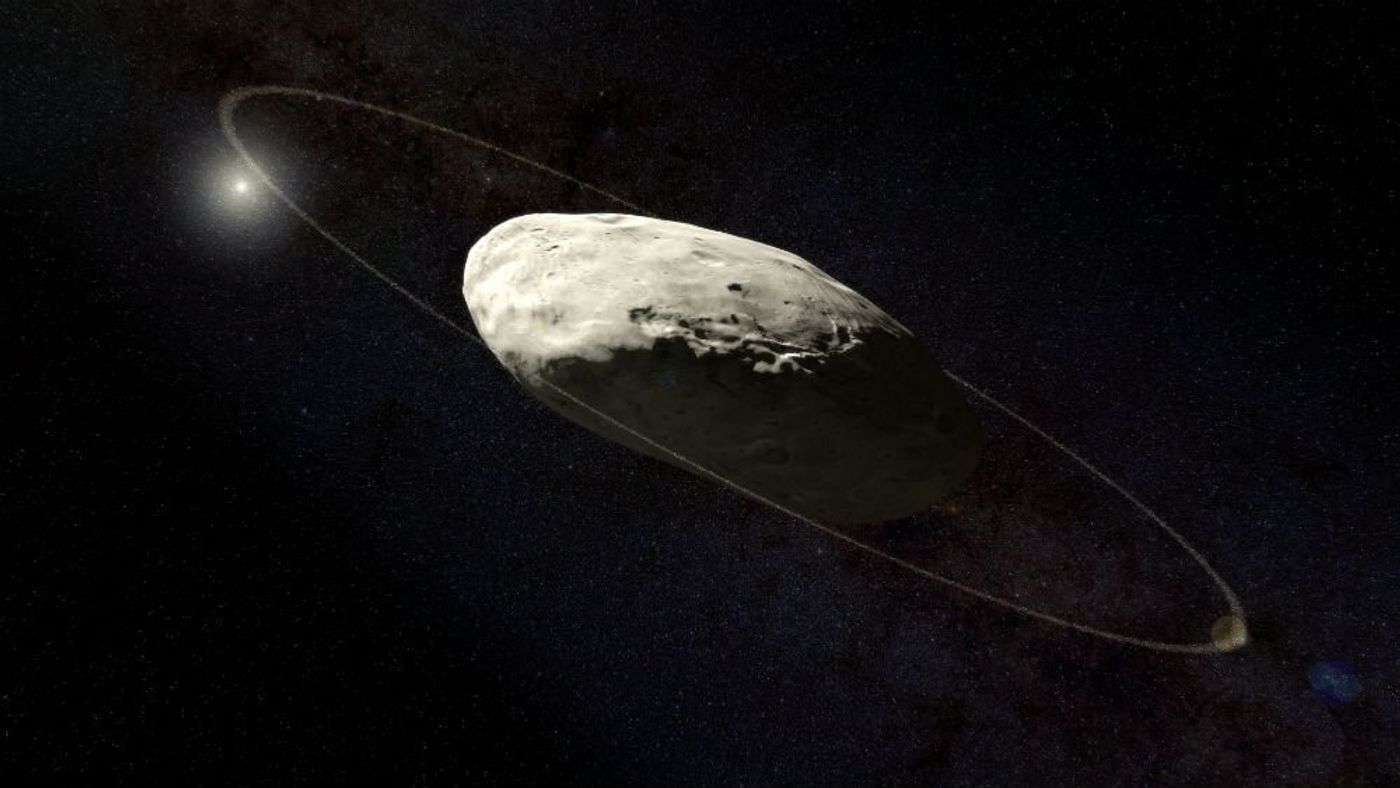Astronomers Delve Into the Dynamics of Haumea's Planetary Ring
If you were to ask any average Joe on the street if they could name some of the solar system’s dwarf planets, Pluto would undoubtedly be one of their first responses. But there are so many other dwarf planets out there, and one named Haumea appears to be captivating the interest of a team of astronomers because it’s believed to exhibit a planetary ring.
Image Credit: Kevin Gill/Wikimedia Commons
Astronomers first happened upon Haumea in 2004, and they discovered some of the first tidbits of evidence for planetary rings in 2017 while measuring dips in light as the small, oddly-shaped world passed in front of a distant star. Unfortunately, this occultation is all astronomers can go by, as Haumea is much too far away to observe directly with a space telescope like Hubble.
"The light from the star was observed from Earth as the star was occulted by Haumea," explained Othon Cabo Winter, the lead author of a paper that has been published in the Monthly Notices of the Royal Astronomical Society.
"Its brightness decreased as Haumea passed in front of it, enabling the astronomers to obtain information about Haumea's shape. The star's light also faded when the ring passed in front of it, enabling them to obtain information on the ring as well."
Related: What actually causes planetary rings to form in the first place?
It’s very challenging to deduce facts from indirect observations, and with that in mind, precise details regarding Haumea’s planetary ring tend to be somewhat sparse.
Back in 2017, astronomers thought that Haumea’s planetary ring was somewhere in the ballpark of the 1:3 resonance region; in other words, the ring particles make one full revolution after Haumea rotates three times. But the latest study, using computer simulations based on the Poincaré surface-of-section technique, finds that it isn’t the 1:3 resonance that dictates where Haumea’s planetary rings reside, but rather a “family of stable periodic orbits,” as Winter puts it.
"The main aim of our research was to identify the structure of Haumea's ring in terms of the location and size of the stable regions. We also wanted to find the reason for the ring's existence. We were particularly interested in trying to understand the dynamic structure associated with its 1:3 resonance," Winter added.
Related: Saturn's planetary rings are still very young, study concludes
The computer models devised particle trajectory simulations, and as it would seem, Haumea’s planetary rings are comprised of some slightly wonky physics. Some of the rings’ most stable areas, known as islands, exhibited highly-eccentric orbits, while others exhibited very low eccentricity. It’s insinuated that the effects of the two polarizing islands negate one another as they orbit Haumea to create the balance necessary for the planetary ring to exist.
The theory is, of course, based solely on computer simulations and not by direct observations, but it might help explain the peculiar circumstances surrounding Haumea’s planetary ring. One can only hope that technology will one day advance enough to let astronomers directly observe Haumea’s planetary ring and see what’s actually going on over there.
Source: Phys.org, Monthly Notices of the Royal Astronomical Society









